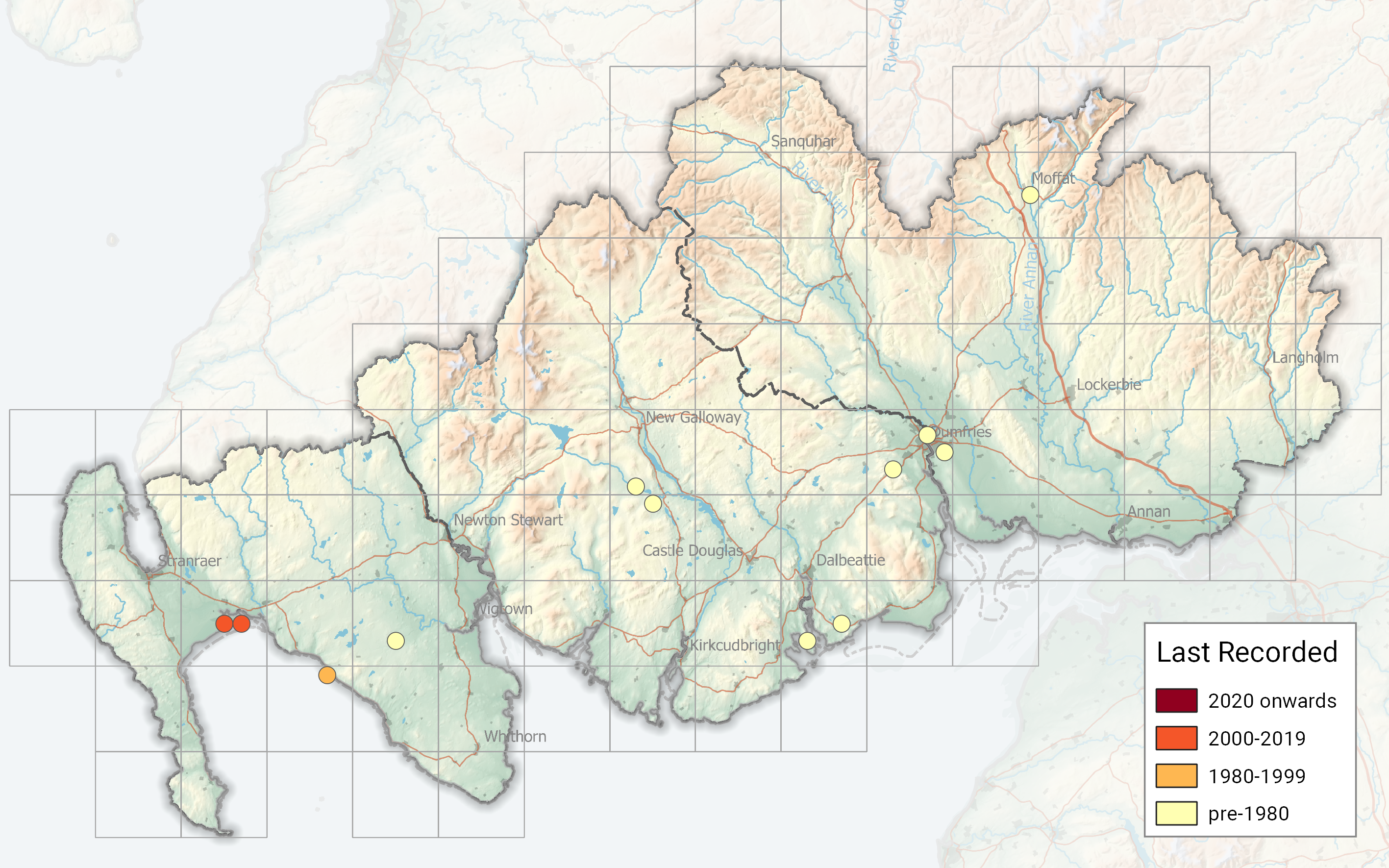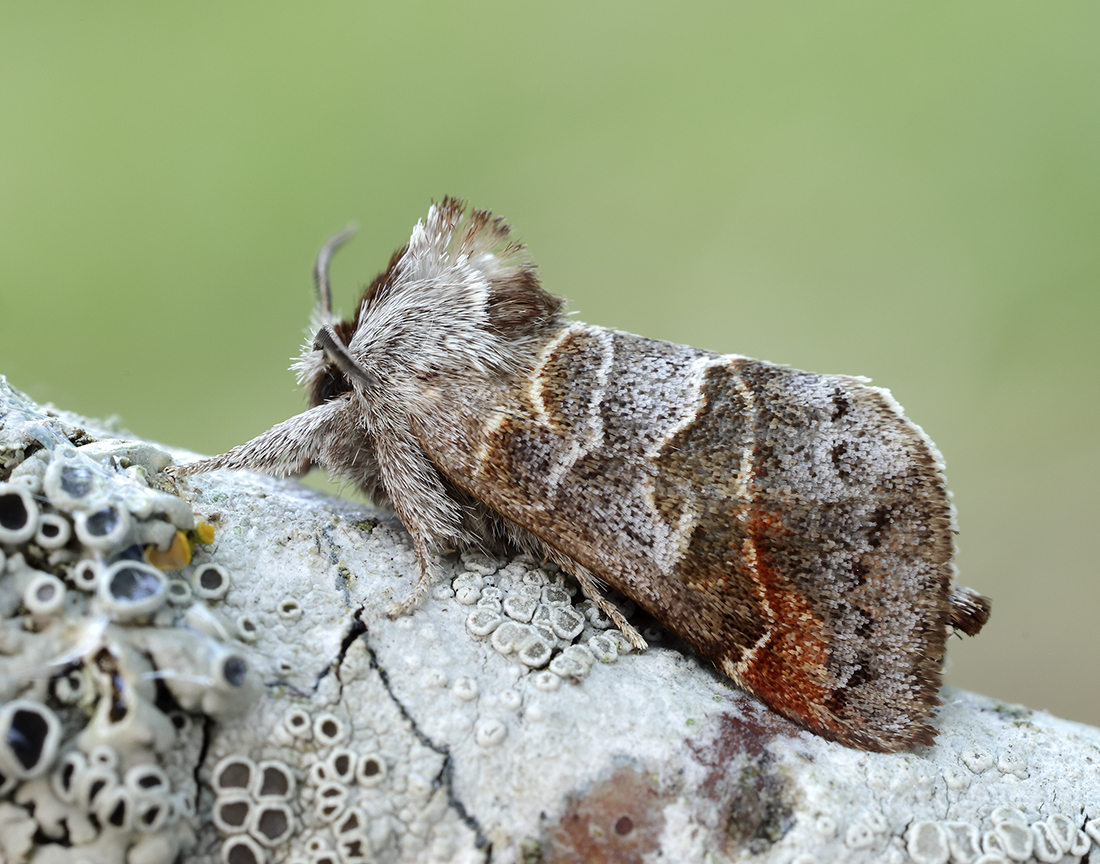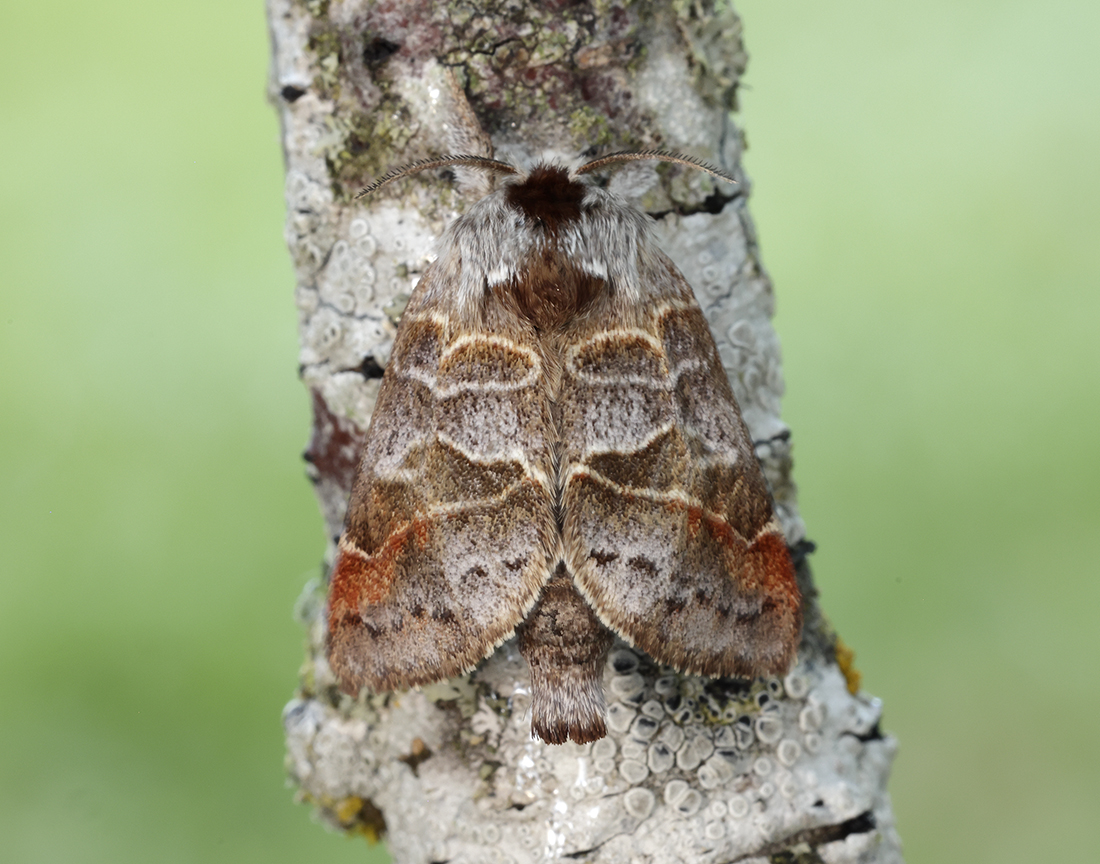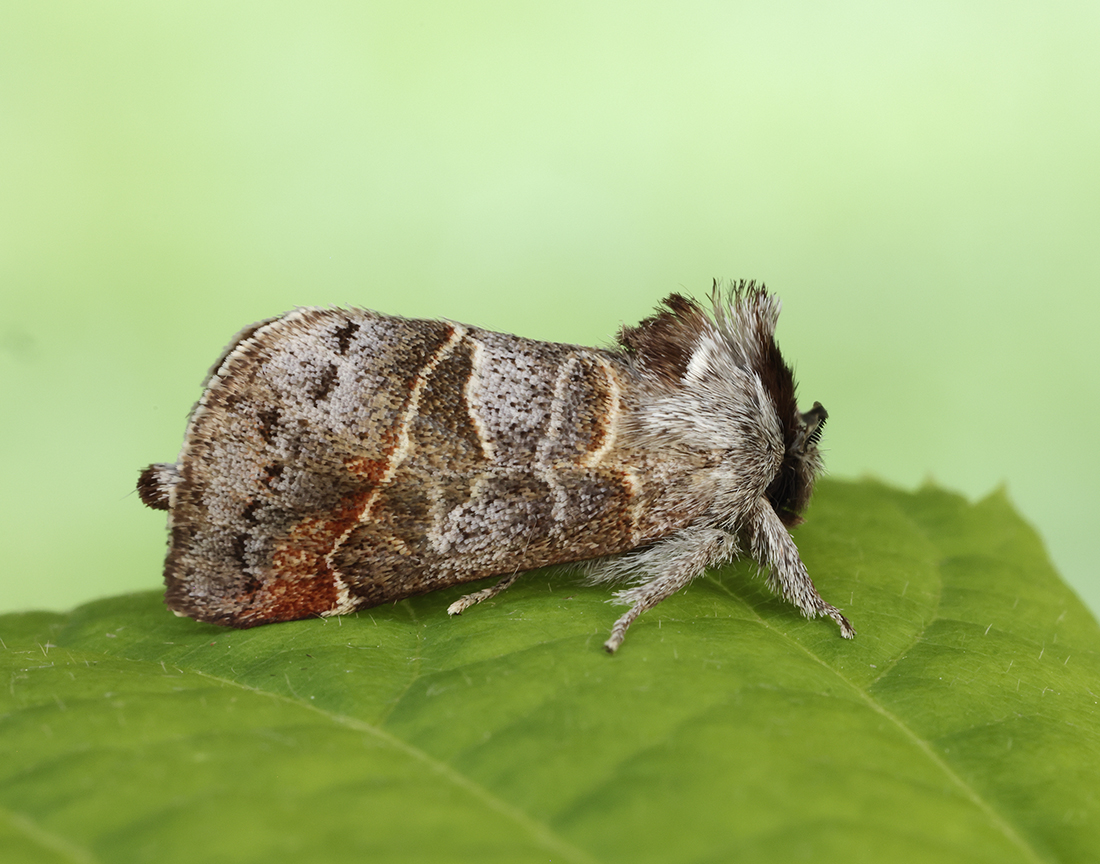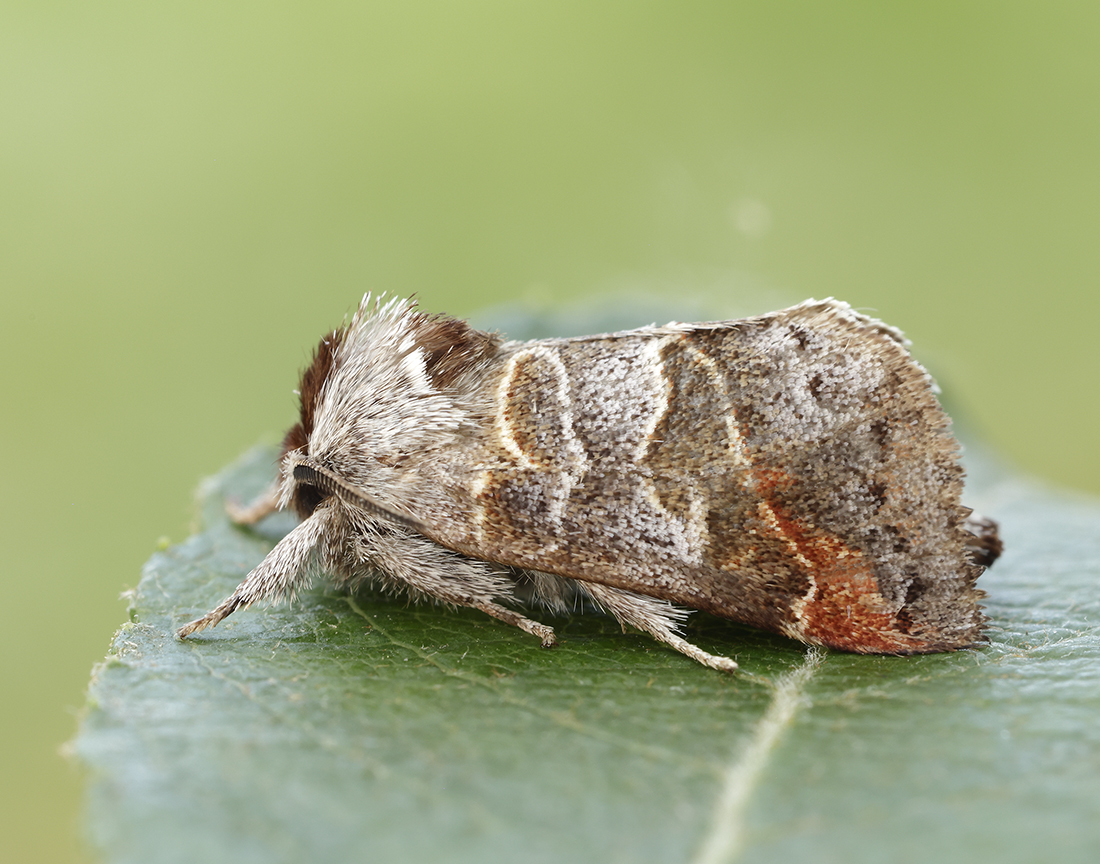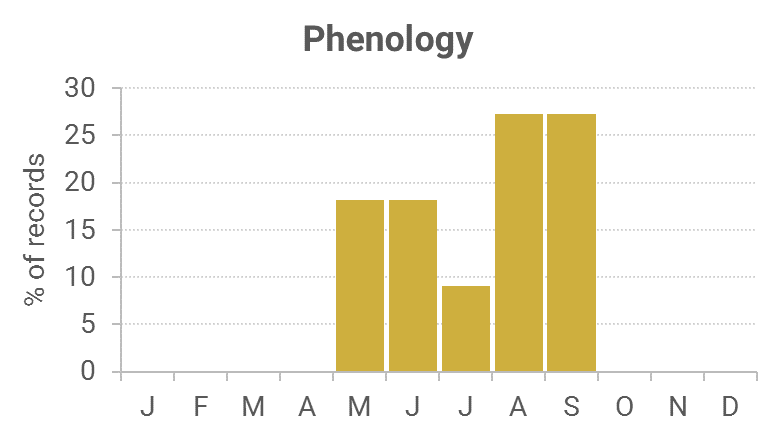Identification
The poorly-defined chocolate-brown blotch near the apex, with its small size will help to separate it from other Chocolate-tips. Due to its rarity status a specimen or quality photo required for record acceptance.
Recording Method
Attracted to light but most easily recorded as a larva.
Life cycle
One generation. Overwinters as a pupa. Larvae are present June to the middle of July and easily recognised.
Larval foodplants
Creeping Willow, Eared Willow and Aspen.
Habitat
Fens, marshes, damp heathland, dune-slacks and moorland.
History
Somerville (1858) while visiting the Moffat area had found the larvae on sallow in August of that year. Lennon (1860) had stated that he had bred 160 on, presumably from larvae he had collected from around Dumfries whilst out rambling. By 1863, he stated he had found it near Gasstown (VC72) and at Dalskairth (VC73). Douglas Robinson (1870-71) also found the larvae in August abundant on sallow around Almorness (VC73). Buchanan White of Perth (1895) listed it as occurring in Colvend and Southwick parishes (VC73).
R. S. Gordon (1913) had found the larvae plentiful on sallow and also on poplar. He admitted that he had only seen the imago twice, one was at rest on a sallow twig on 9th May 1897 at Corsemalzie, while the other flew over the grass near his garden at Corsemalzie in hot sunshine on 28th May 1911.
All of these records are additional to MOGBI who were unaware of its existence in this region of Scotland.
Further records are from Gatehouse of Fleet railway station and Stroan Loch in September, 1972, presumably of larvae, but this fact was not recorded.
In 1987 Bernard Skinner found fourteen larvae in rolled leaves of Salix repens at Garheugh, Wigtownshire, during a visit in mid-August 1987.
On 26th June 2005 larvae were found at Torrs Warren, Wigtownshire.

